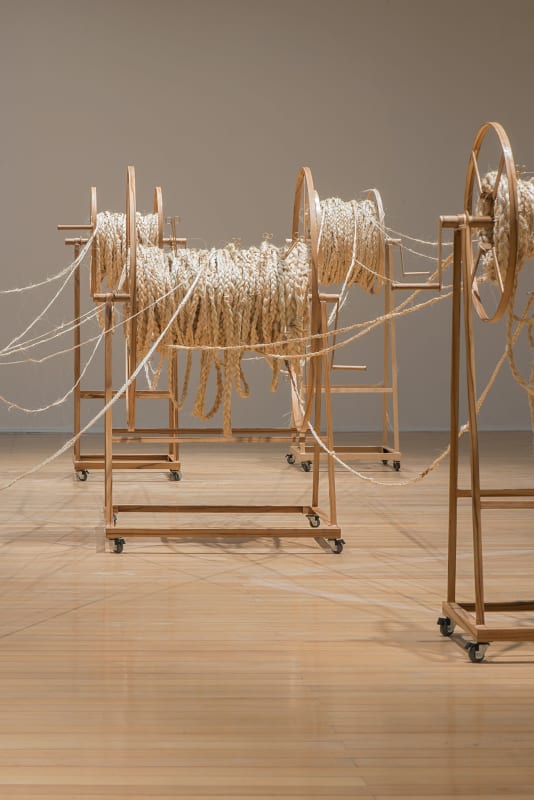In the folk tale compiled by the Brothers Grimm, Rapunzel is the girl whose destiny is defined by the magical power of her long blonde hair. It is both the cause of her curse and the access to her freedom. Basically, the braids become the protagonists of the story, often represented as if it had a life of its own in old illustrations. And as in every fairy tale, beauty is associated with magic: both are seductive and enchanting, but they also lead to blindness (literal in this case) or some violent act, before everything finally ends well.
In Flávia Bertinato's installation entitled Rapunzel, seven spools of different sizes wind long, thin sisal braids, pierced by golden surgical scissors. The moment evoked is the one after the violent action that momentarily ended the main character's charm. As in other works by the artist, Rapunzel presents time in suspension, the cut of a narrative sequence that reveals itself as an instant of high tension. The tangle of braids can regenerate and take up space in an infinite weave, as well as remain motionless, lifeless.
Bertinato accesses the popular imagination to confront us with common sense regarding the ideas of love, seduction and femininity, naturally with irony and ambiguity. Because, if on the one hand the attraction to beauty is reiterated, on the other, the disruptive element that is its double is also present. In a sense, this corresponds to the very relationship we establish with art. Its objects are made to seduce and they seduce us, but this attraction is not just deception. It can also be the passage to the inside out, the other side.
Taisa Palhares

